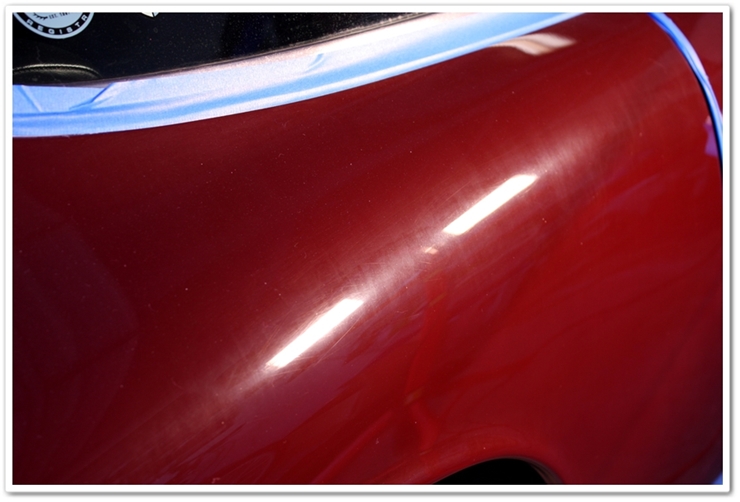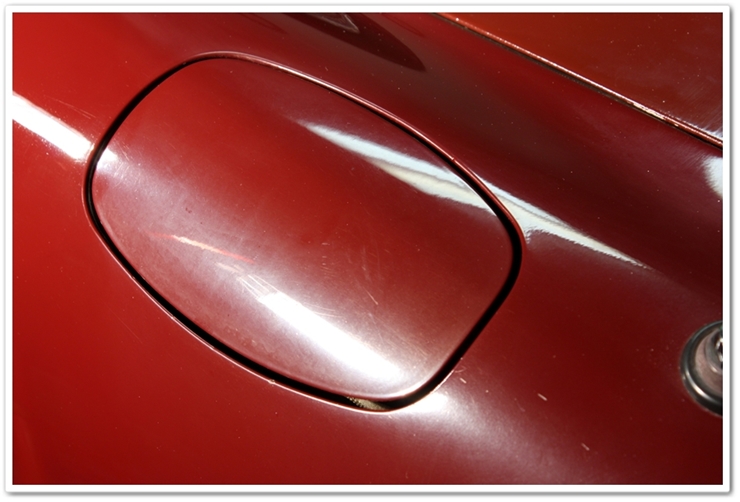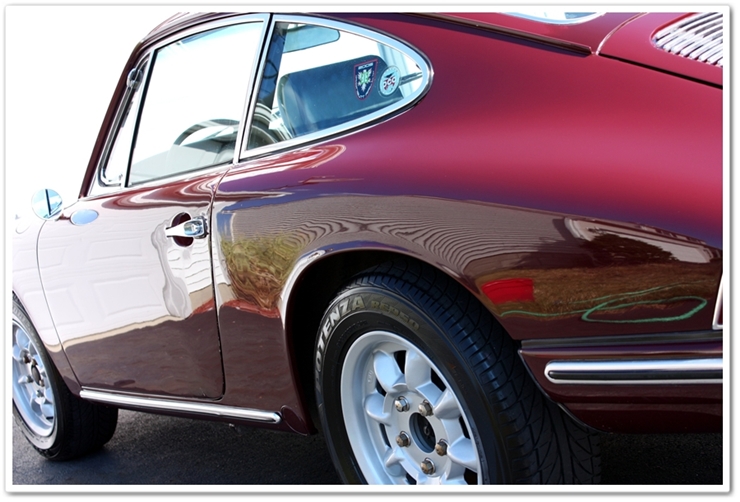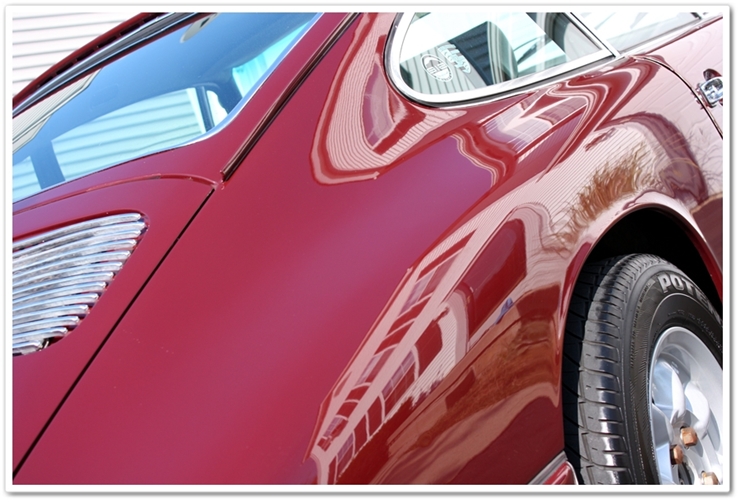Ask-A-Pro: How to Polish Single Stage Paint?
by Todd CooperiderTony has some classic cars with single stage paint, and wants to know if he should care for it differently than he would a modern 2-stage paint.
Hello,
I recently purchased a 7424xp with a bunch of pads and accessories and have reviewed all of your blog entries and FAQ’s. they were very helpful.. I plan on using this buffer with my new vehicles as well as some older classic cars I have. My question has to do with single stage paints (not clear coated) and the best way to work with them. How should the selection of pads, polishes, and procedures differ with these paints since there is no clear coat.
Car 1: Is an unrestored 1969 Mustang with original paint that is in very good condition except for some nicks, and minor swirls/scratches. It is original Ford lacquer paint from 1969.
Car 2: Modern acrylic single stage paint (to get that original look) with minor swirl marks.
Thanks
Hi Tony, and thanks for submitting your questions.
First let’s take a quick look at the different paint types for those unfamiliar with them. Single stage paints have the color and gloss mixed in together, and this type was the standard up until about 20 years ago (although you’ll still find the occasional car newer than that with single stage paint). Modern paints are two-stage, meaning they use a base color coat which is then topped with a clear coat to provide gloss and protection. If you have an older car, and want to find out if it is single stage or two-stage, then do a simple test on an inconspicuous area like the door jamb. Take a microfiber cloth and some light polish, and rub against the (clean) paint. If the color rubs off onto the cloth, then it is single stage.
Fortunately for you Tony since you just purchased a PC7424XP, pads, and polishes, you really don’t need to do anything special in comparison to your newer clear coated vehicles.
The best way to approach the polishing of your single stage painted vehicles is to pick a test area on the car and try the least aggressive combination first. Most single stage paints I’ve worked with have been relatively soft, which requires a less aggressive method and polish/pad combinations. If for instance you were using Menzerna polishes, then I would try 106FA and a white pad first to see what kind of correction you get. If it works to your satisfaction, then continue on with the rest of the car. If you still need more cut, then step up to either Power Finish or Super Intensive Polish with a (fresh) white pad. If you still need more then use the same polish with an orange pad (and so on). When you switch polishes during your testing, be sure to grab a fresh, clean pad so you’re not mixing polishes.
Keep in mind that when you’re working with single stage paints, you will get color transfer onto your pads and microfiber towels, so don’t be alarmed…this is normal. Be sure to use fresh pads regularly throughout the process to ensure that you’re getting the best results. For each polishing step (same polish) around the car, you can expect to use 3 or 4 pads.
When you’re working with these older cars in particular, always be very careful around seams, edges, and high spots and tape them up accordingly because the paint is at its thinnest in those areas. If you don’t have a paint thickness gauge, then be cautious because you don’t know how aggressively polished it has been over the years. In my opinion it’s always better to preserve as much paint as possible. I’d rather leave a few defects in the paint in the interest of paint preservation than to get very aggressive and risk going too thin.
With single stage paints, they also have a tendency to oxidise over time, which means you’ll want to perform the occasional light polishing.
Once you’re finished with polishing, you can use your favorite wax or sealant just as you would with a modern base/clearcoat system.
Here are a few photo examples of some single stage paint from a classic 1968 Porsche 912 that I worked on. It was surprisingly hard, so I needed to take a more aggressive approach with a combination of Meguiars M95, Menzerna SIP, Menzerna 106FA, Optimum Poli-Seal, and then topped with Optimum Car Wax. There were heavy swirls and scratches, along with a tremendous amount of oxidation. When I was done however, the color was deep, and the gloss was outstanding.
Before: Heavy oxidation, scratches, and swirls


After polishing single stage paint:


Well hopefully I’ve covered everything for you here Tony, but if you or anybody else has additional questions or comments, please reply in the comment box below.









Todd,
Thanks very much for this info and this was very helpful. When I purchased my 7424xp and pads, I only purchased the Meguires 205 since it seemed like a good general starting point.
Is this 205 ok to start with and see how it looks, or do you recommend another product to start with?
Keep in mind that even though the paint is old on the 1969, the defects (swirl marks, light scratches) on both cars do not appear to be bad, but are noticeable in the right lighting.
Thanks again,
Tony
Tony,
I’m glad you found this to be helpful.
Megs 205 is a great product to start with. It has light to medium cutting ability, and it finishes down very nicely too. Just look through my tutorial on using M105/M205 and follow the instructions on pad priming and pressure. I’d probably try it with a black pad first, and move up to a white pad if necessary.
Thanks,
Todd
How does one go about polishing a single stage metallic paint job that was recently done but has less shiny areas that became noticable after I applied the paint. I didn’t notice it when I was actually doing the job. It’s my first time to be honest. I don’t think I can polish metallic but is there anything I can do besides repainting it?
Jonas – Please contact us here for support (https://www.detailedimage.com/Contact/Detailing/Polish/).
Very good how to
Thanx for the very good information here as I am beginning to use a PCXP. Would you contrast the differences between Menzema 106fa and M 205 or M105 and Menzema power finish.I guess I am asking which are the least aggresive out of these product lines.
Thanks !
RJ.
Menzerna 106FA has the least cut out of those mentioned. Both M205 and Power Finish work well as medium cut one-step polish with the ability to finish down very nicely. Power Finish is the more aggressive of the two, and may require a lighter polish afterwards if used on a soft, darker colored vehicle. M105 is the most aggressive of the 4, and it requires the use of a final polish such as M205 or 106FA afterwards.
Thanks,
Todd
Todd,
after quite a bit of reading , as a beginner ,would Menzerna po85rd be a choice where minimal correction is needed ? I have only CCS pads presently,so would you suggest starting with a black pad ,followed by white if the cut was not adequate ? and at what speed with the PCXP ?
Tnanx !
RJ
RJ,
If you have just light correction to perform, I would probably reach for Menzerna 106FA instead of PO85RD. Trying a black pad first and then stepping up to a white one if necessary is a good plan of attack.
First spread the product around on speed 4~5 on the PC 7424 XP, then kick it up to 6 until the product break down (becomes clear), and then back down to 4 or 5 with light pressure for your last couple of passes.
Ive been reading your comments, and you sound like I can rely on your experience, I am spraying a single stage metallic paint, I have been told by the “experts- other guys painting” that I cannot cut and polish the metallic paint like other 2 stage paints, is this a true story, or are there ways to work these out, thanks for any info.
Todd
I am extremely reluctant to power buff and polish my single stage painted 1989 Porsche 944 S2. Can you recommend a product to take out some light scratches and swirls by hand?
CanI use a swirl remover before I polish on sigle stage paint?
I polished a 95 nissan SE-R, single stage black. Came out great, but after about 2 months, it started to oxidase. I used Jetseal and Pete’s 53. What is the best protection for single stage paint? How often do I have to protect it?
What would be better for my house door facing south,be/cc or single stage? Thanks
Thanks for all your info it has been very helpful and 100% correct every time I just painted my 68 Chevy pickup with a single stage acrylic urethane turned out
nice but I feel the shine could maybe be a lil deeper. It’s metallic any suggestions
Can you use a ceramic sealer on a single stage metallic paint job?
You can use a ceramic coating on single stage paint types.
Resurrecting this post to ensure the path I am going to follow: I have a 1965 Land Rover 2A with the original Poppy Red paint that has probably never been corrected in its life. I want to give it a light polish to remove oxidation and bring the color back to life. However, there are rock chips along the front, and a couple of chips along the rear quarters, will a polish expand on these rock chips, and how delicate will 50 year old single stage paint be? Utilizing a Torq10Fx, was thinking Menzerna 3500 and trying an assortment of pads. Any help would be greatly appreciated.
[…] How to polish single-stage paint […]
Hi. I have a 1992 Toyota pickup that I just painted with single stage red paint.no clear coat.this is my first paint job.I’m wondering how to get a better shine?I guess it’s ok for my first one but I would appreciate any tips.thanks very much.
Charles – Thank you for the message! I would recommend following the steps listed in this article. Start with a light pad/polish combo, inspect the results, and pump the power up as needed. Something like a Lake Country White Foam Pad and the Sonax EX 04-06 is a great light polishing combination that will help remove imperfections in the paint. If you need to pump up the power, use the Lake Country Orange Foam Pad and the Menzerna 400, just be sure to follow up with the light correction option to remove any compounding haze and finish the paint down. Once you remove the imperfections, you will be left with a surface with clarity that you can top with a protective layer to add more gloss.
Thanks very much.I really appreciate it.I don’t know anything about buffers either.I want to purchase one but don’t want to invest a lot of money.just like to know would be a pretty good brand and size that would do a decent job for a beginner.I haven’t ever used a buffer.I would appreciate any advice you could give me also the place to purchase them.thank you very much.
I would lean towards the Griot’s G9 (https://www.detailedimage.com/Griots-M56/G9-Random-Orbital-Polisher-P2051/6-S1/). This unit comes at a great value, yet has some features of higher end polishers. Also, Griot’s has a great warranty and repair service if anything ever happens to it in the future.